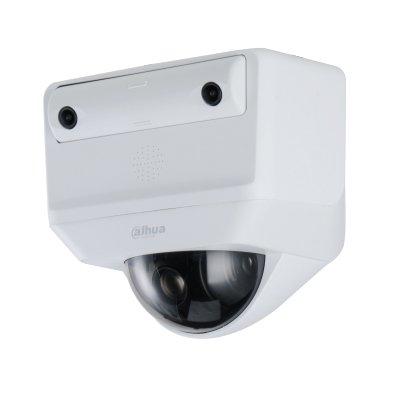 |
| Well defined spec key to cost-effective CCTV installation |
To design an effective CCTV installation, it is first necessary to decide what the installation is supposed to do. For example, in a stadium or a shopping centre, the CCTV system may have functions that include crowd management, a health and safety tool to spot potential problems, and an aid to security. In a retail environment, it could be used to curb shoplifting or to prevent staff fraud at the checkouts and in sports centres to monitor locker rooms to combat break-ins and theft.
Whatever the required functionality, it is essential to define this fully before looking at the design of the surveillance system itself. This ‘requirement spec' will influence and define the type of CCTV equipment needed and how it must be deployed to secure good quality images.
Take a holistic view and then work down to the detail. In a retail situation, for example, it might at first seem desirable to have a surveillance system that provides facial recognition of subjects throughout the store. In practice this may not be necessary. Police report suggests that the quality of up to 80% of CCTV images is so poor that they can't be used for evidential purposes Police report suggests that the quality of up to 80% of CCTV images is so poor that they can't be used for evidential purposes |
Provided that good facial images can be captured as subjects enter and leave the store, all that's usually needed in between is images that are sufficiently good for tracking the movements of the subjects around the store. This doesn't need facial recognition - clothes, hair colour and the like are usually enough to allow recognition for tracking purposes.
This clearly means that fewer surveillance cameras are needed on the shop floor, although there may well be areas, such as the checkouts or in the vicinity of easily stolen high value items, where additional CCTV coverage is beneficial.
It is, however, worth mentioning that capturing good images at the entry and exit points to stores and other premises can be challenging. The difficulty, particularly for people coming into the premises, is that they are often silhouetted against the bright outdoor light. As a result, their faces may be very dark and hard to recognise. This is, in fact, one of the most common reasons for recorded images falling short of evidential standards.
 Balance must be placed between budget available and results expected from CCTV video surveillance solution |
Wide dynamic range security cameras
One solution is to use so-called ‘wide dynamic range' security cameras in these locations, which can better cope with the huge contrast between the shadowed face and the daylight beyond. However, even this is not always sufficient, and this has led to the development of surveillance cameras with new technology known as Pixim. These are effective in even the most difficult circumstances as the chip used inside works very differently to a standard CCD.
Even in less demanding environments, image quality is affected by the type and number of cameras. Wide-angle lenses allow a large area to be covered with relatively few security cameras. Unfortunately, the level of detail captured will be much less than the same area covered by more cameras that individually have a narrower angle of view. Clearly, a balance has to be struck between budget available and the results required.
Recording and storing surveillance video It's still necessary to be wary of CCTV video recorders that appear to offer a very high storage capacity for a temptingly low price |
A final, and often overlooked, factor that affects image quality is the monitor on which the images are viewed. No matter how good the rest of the installation, if the CCTV monitor is worn out, of poor quality or just badly adjusted, the images will look appalling. Fortunately, this doesn't affect the quality of the recordings themselves, but it's amazing how frequently decrepit monitors are kept in service long past their put-it-in-the-skip date!
In summary, there is absolutely no reason why any modern CCTV installation should fail to consistently deliver images of evidential quality. All that's needed is forethought and planning, and the use of CCTV equipment from a reliable supplier that can provide expert advice in areas where the system poses particular or unusual challenges.
 | Alistair Enser Siemens Building Technologies |




















